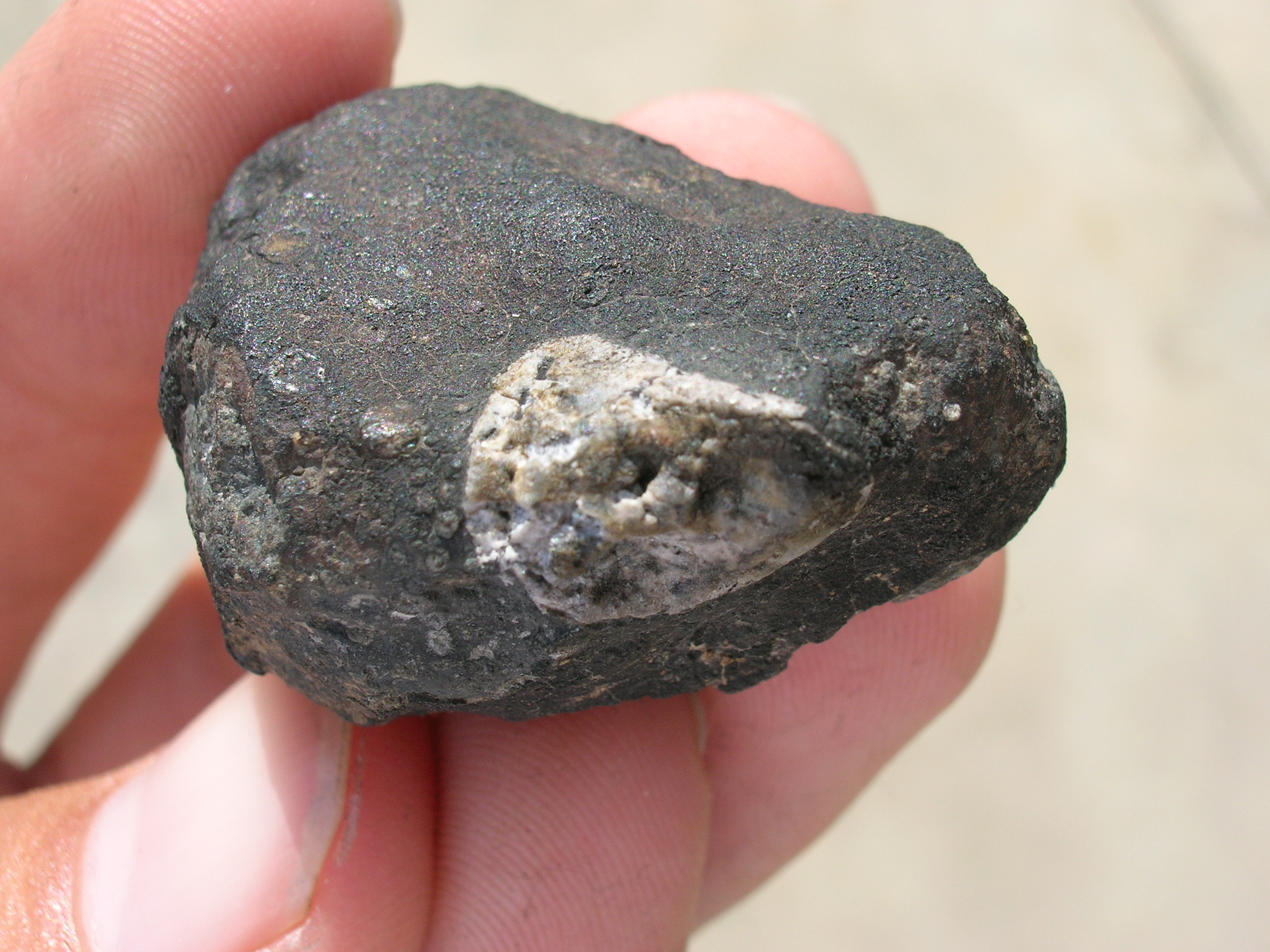Allende, CV3.2
Allende is one of the largest recovered falls of the 20th century, and also one of the most scientifically important and researched. Several tonnes of meteoric material fell, providing scientists with a vast amount of pristine primitive Solar System material for research. Its fall date is also important: February 8, 1969. The United States was readying for its first attempt to land on the Lunar surface, and clean labs were ready for Lunar samples. Fragments of Allende were promptly recovered and studied in what were then the most advanced labs ever built. Modern advances in equipment and isotopic resolution have made even further discoveries possible; Allende remains one of the most published and referenced meteorites today.
This 24.525 gram stone exhibits one of the larger calcium aluminum inclusions (CAIs) I have seen. These refractory inclusions are comprised of elements that condense and solidify at slightly higher temperatures than most silicate minerals; they likely formed a little earlier in the solar nebula, when the disk of superheated gas and dust was too hot for other minerals to have condensed yet. These inclusions have been determined to be ~ 4.565 to 4.568 billion years old. They are the oldest macroscopic objects we can see and hold; only microscopic pre-Solar grains are older.
Recent work has suggested that different types of CAIs may have originated in distinct reservoirs of material sourced from at least a few different stars.
A few chondrules can be seen trying to poke through the fusion crust.
